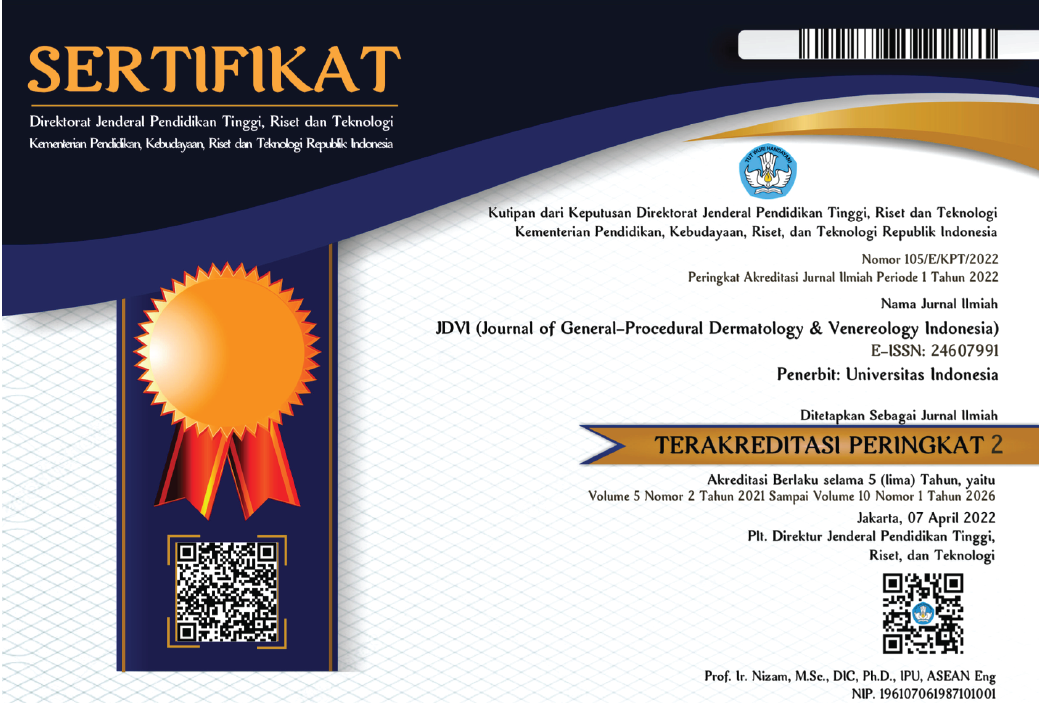Abstract
Background: Lucio's phenomenon (LP) is a rare variant of leprosy reaction, with the clinical manifestation of “necrotizing erythema.” LP was observed in patients with lepromatous leprosy who have not received or completed the treatment, and it is especially evident in patients with diffuse lepromatous leprosy (DLL), known as Lucio-Latapi’s leprosy. LP occurs due to M. leprae invading the blood vessels, causing endothelial damage that leads to thrombosis, ischemia, infarction, and tissue necrosis. The clinical features of the disease are erythematous lesions that can be accompanied by vesicles or bullae, with ulcers forming scar tissues. Histopathological examination can help establish the diagnosis of LP. Until now, there is still controversy about LP management. Multidrug therapy for multibacillary leprosy (MDT-MB) is the preferred line of treatment. Lucio-Latapi’s leprosy and LP are commonly found in Mexico and Central America, but rarely reported in Indonesia.
Case Illustration: We report here the clinical description and development of six patients with LP observed in the tertiary referral hospital in Indonesia over a five-year period from 2013 to 2017.
Discussion: All patients were diagnosed using clinical and histopathological examination, and all of them presented with ulceration and vasculitis. They were treated with MDT-MB WHO regimens and systemic corticosteroids. Five patients were alive, and one died due to extensive cutaneous lesions that lead to sepsis.
Conclusion: Early diagnosis and prompt institution of multidrug therapy with systemic corticosteroids may improve the prognosis and outcome of LP.
Recommended Citation
Marissa, Melani; Rihatmadja, Rahadi; Surya, Denny; Lim, Henry W.; and Menaldi, Sri Linuwih
(2020)
"Lucio’s phenomenon: A report on six patients in a tertiary referral hospital in Indonesia,"
Journal of General - Procedural Dermatology and Venereology Indonesia: Vol. 5:
Iss.
1, Article 5.
DOI: 10.19100/jdvi.v5i1.225
Available at:
https://scholarhub.ui.ac.id/jdvi/vol5/iss1/5
Included in
Dermatology Commons, Integumentary System Commons, Skin and Connective Tissue Diseases Commons






























